Abstract
At the mu-sites of rabbit cerebellum, NaCl, LiCl, KCl, choline chloride and MnCl2 were tested for potentiation and inhibition of the binding of several opioids. Naloxone, (-)-bremazocine and diprenorphine are mu-antagonists in pharmacological assays and their binding is potentiated by the lower concentrations and inhibited by the higher concentrations of NaCl. The binding of the agonists [3H]-[D-Ala2, MePhe4, Gly-ol5]enkephalin and [3H]-dihydromorphine is inhibited. MnCl2 potentiates the binding of the agonist [3H]-[D-Ala2, MePhe4, Gly-ol5]enkephalin but not the binding of the antagonists. The thresholds of inhibition and slopes of the dose-response curves for inhibition by MnCl2 and LiCl vary. This finding may indicate that potentiating effects of MnCl2 and LiCl are masked by simultaneous inhibition. At the kappa-sites of guinea-pig cerebellum, NaCl, KCl and MnCl2 inhibit the binding of [3H]-dynorphin A (1-8), [3H]-dynorphin A (1-9), [3H]-(-)-bremazocine, [3H]-tifluadom, and [3H]-diprenorphine. NaCl also causes a small potentiation of the binding of [3H]-diprenorphine, which is a kappa-agonist in the guinea-pig myenteric plexus but a kappa-antagonist in the rabbit vas deferens. The slopes of the inhibitory dose-response curves and the thresholds of inhibition vary with the different ligands. Therefore some potentiating effects may have been masked. The results support the view that NaCl, and perhaps LiCl, but not KCl and choline chloride, potentiate the binding of mu-antagonists but not the binding of mu-agonists. It is not yet possible to decide whether, at the kappa-site, there is a similar differentiation of the binding of agonists and antagonists.
Full text
PDF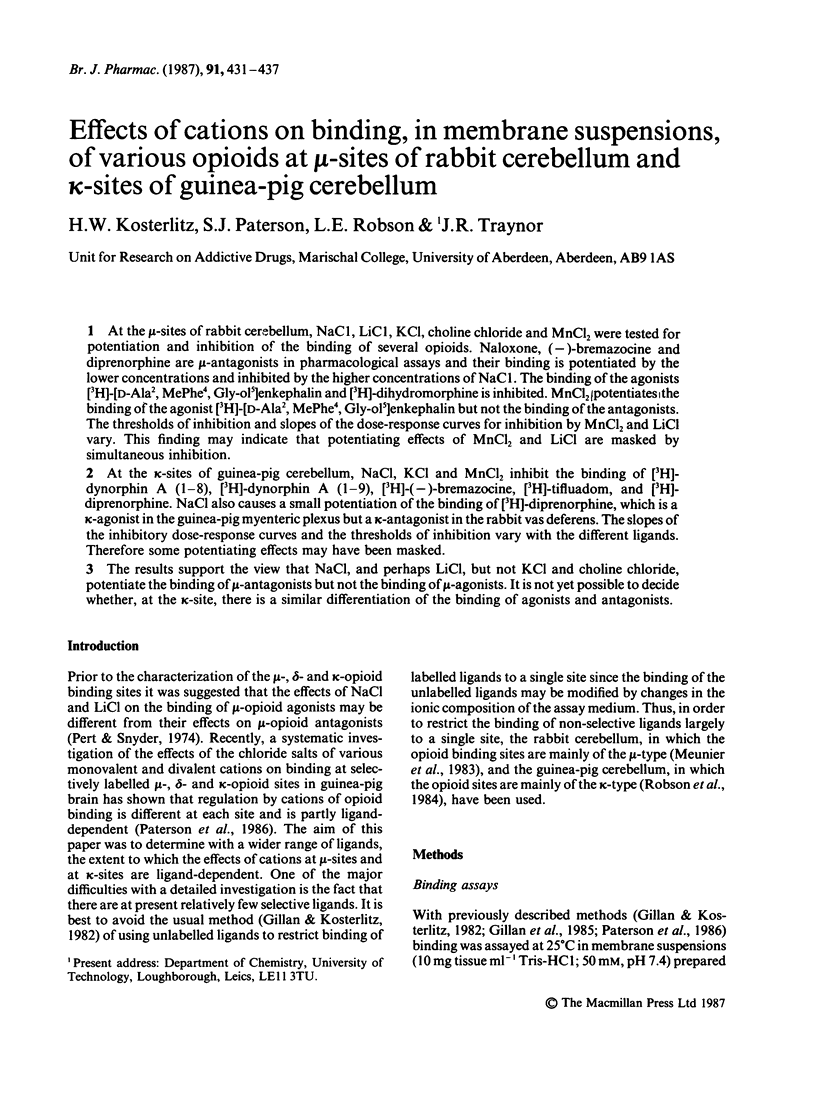
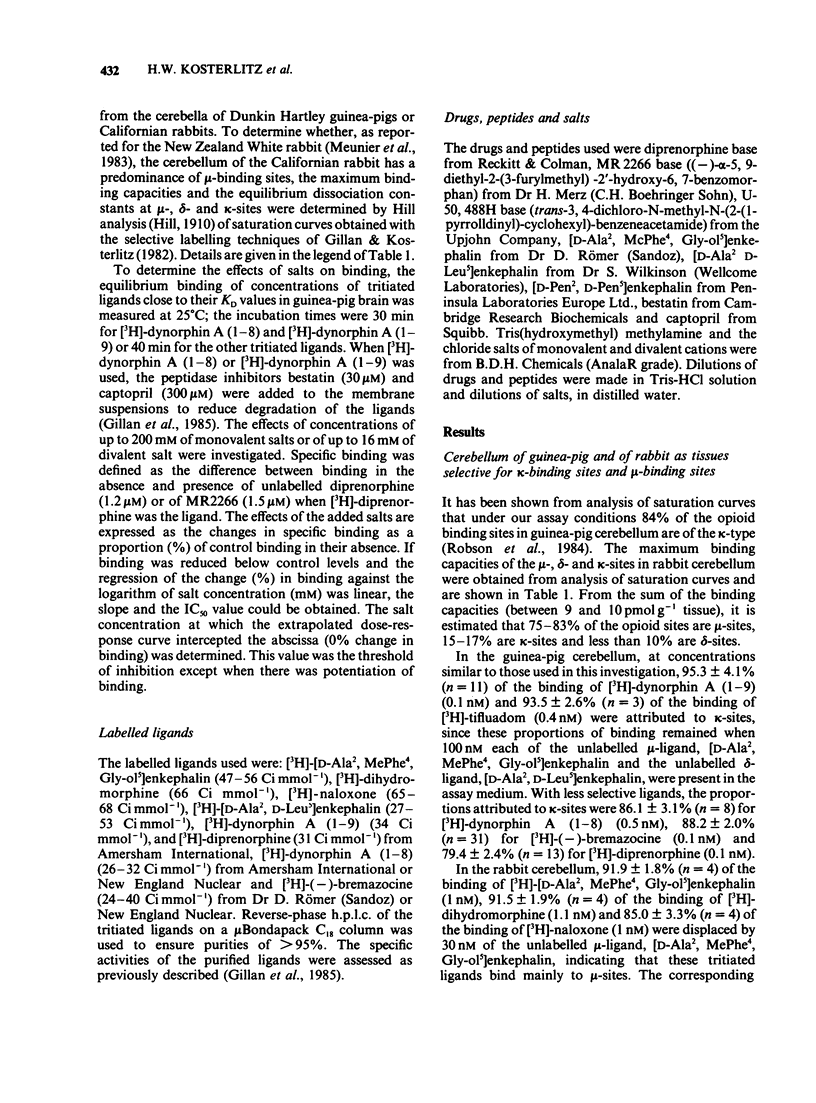
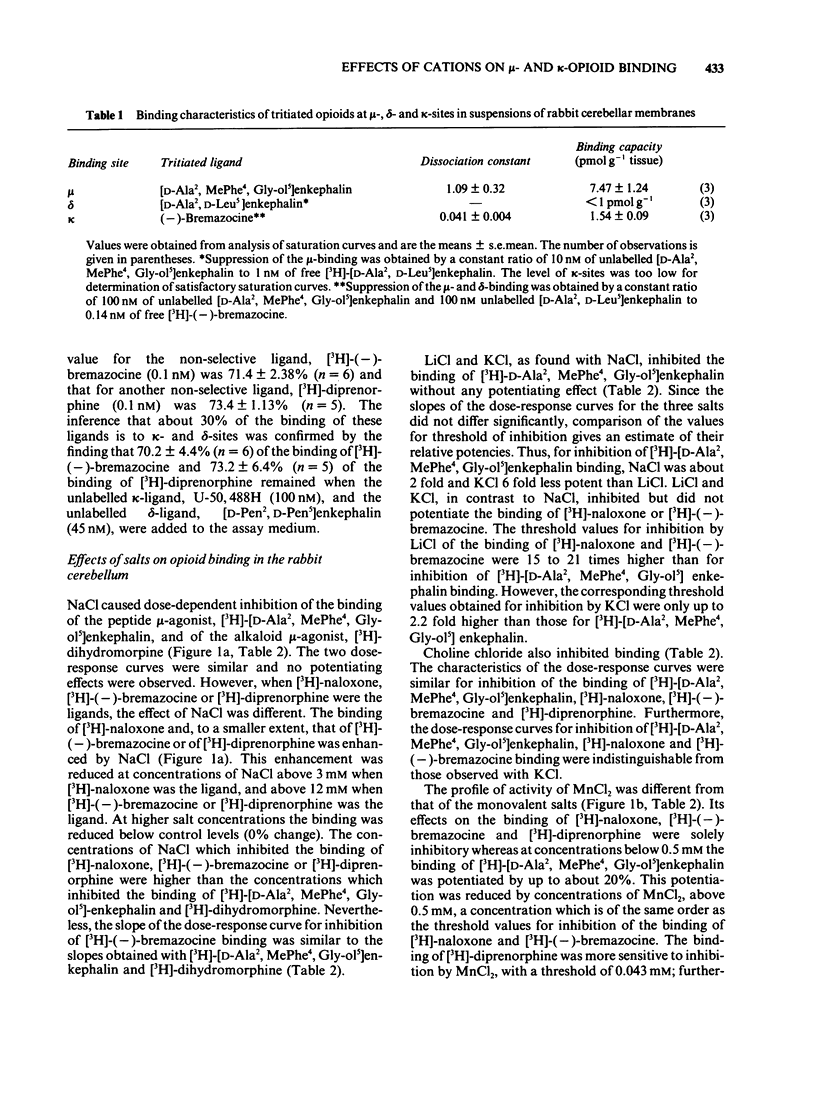
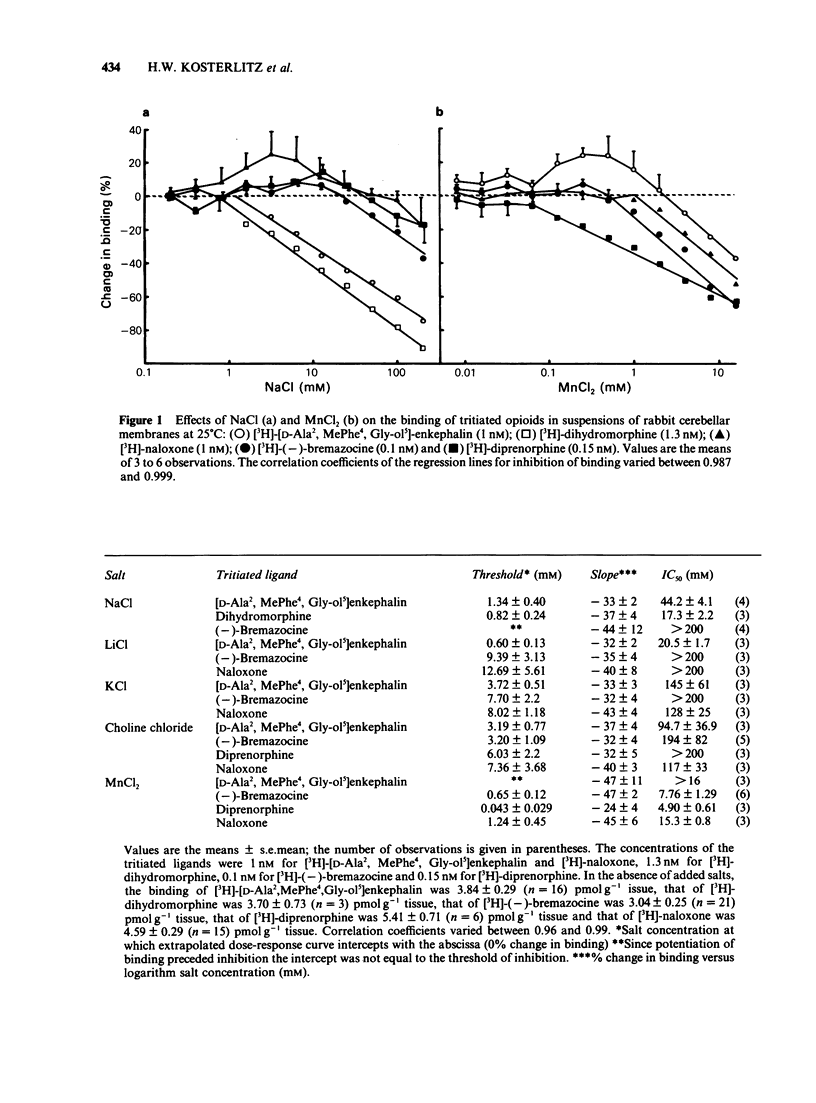
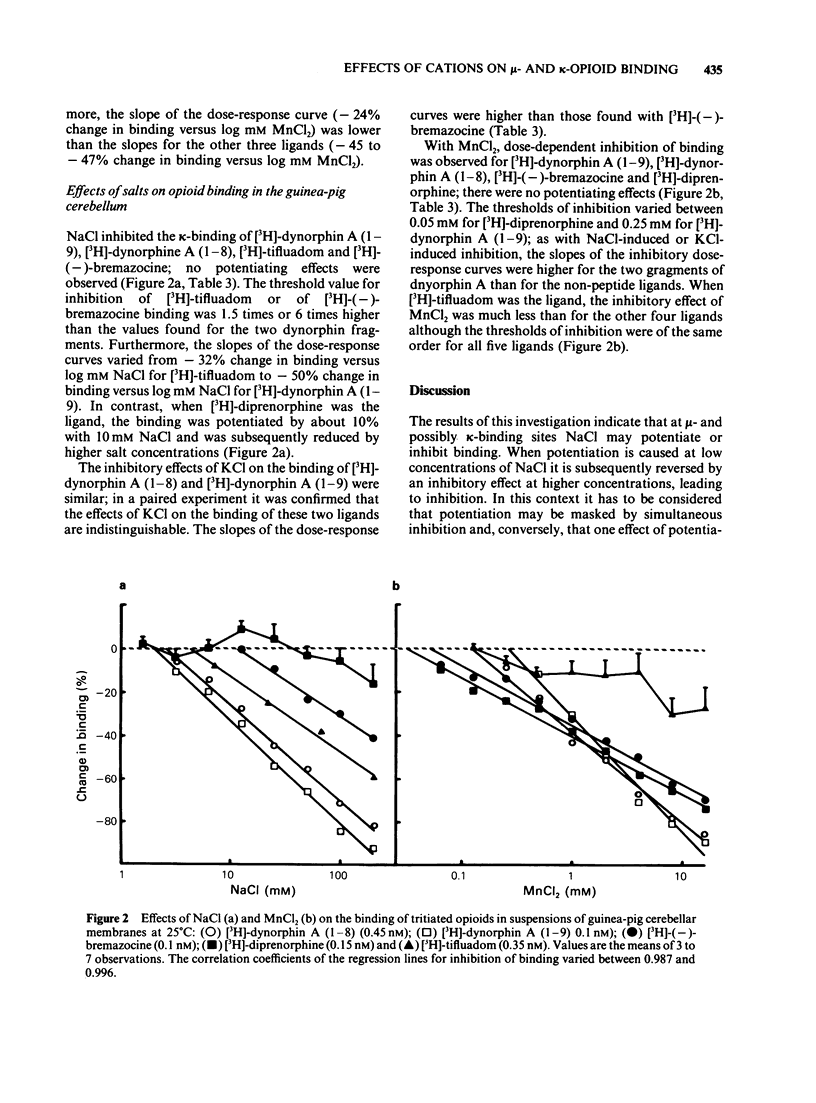
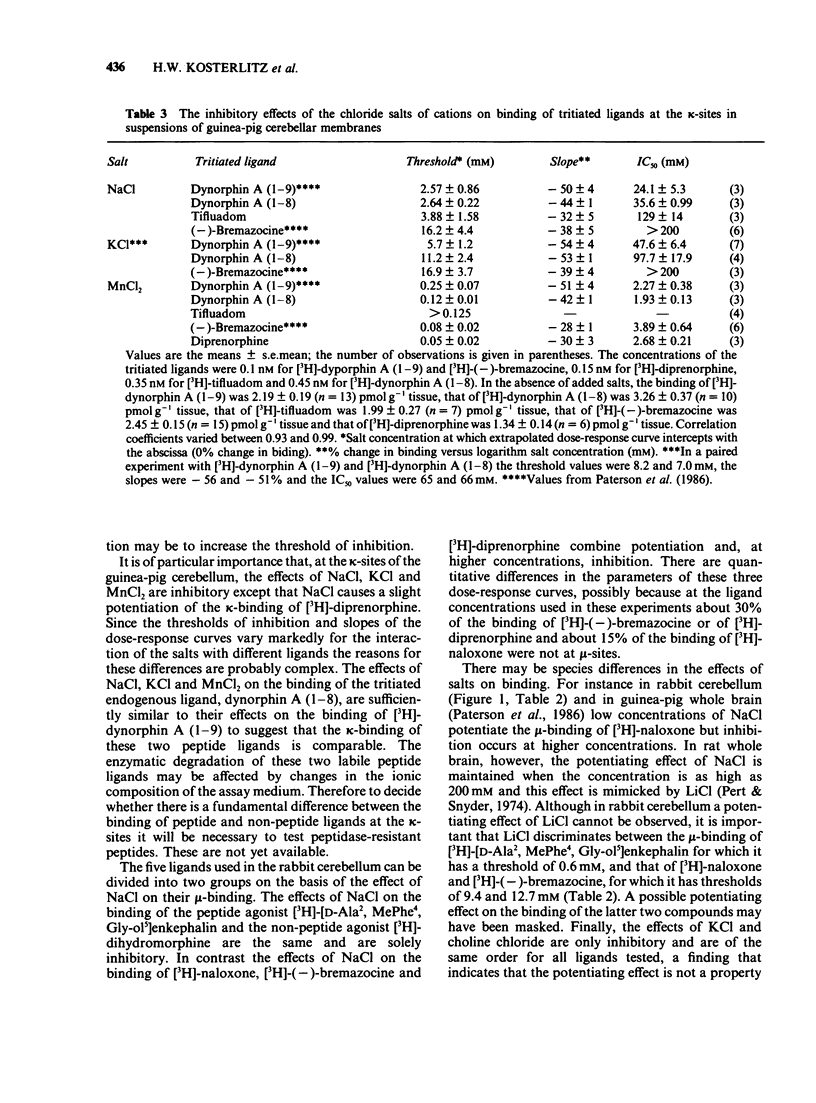
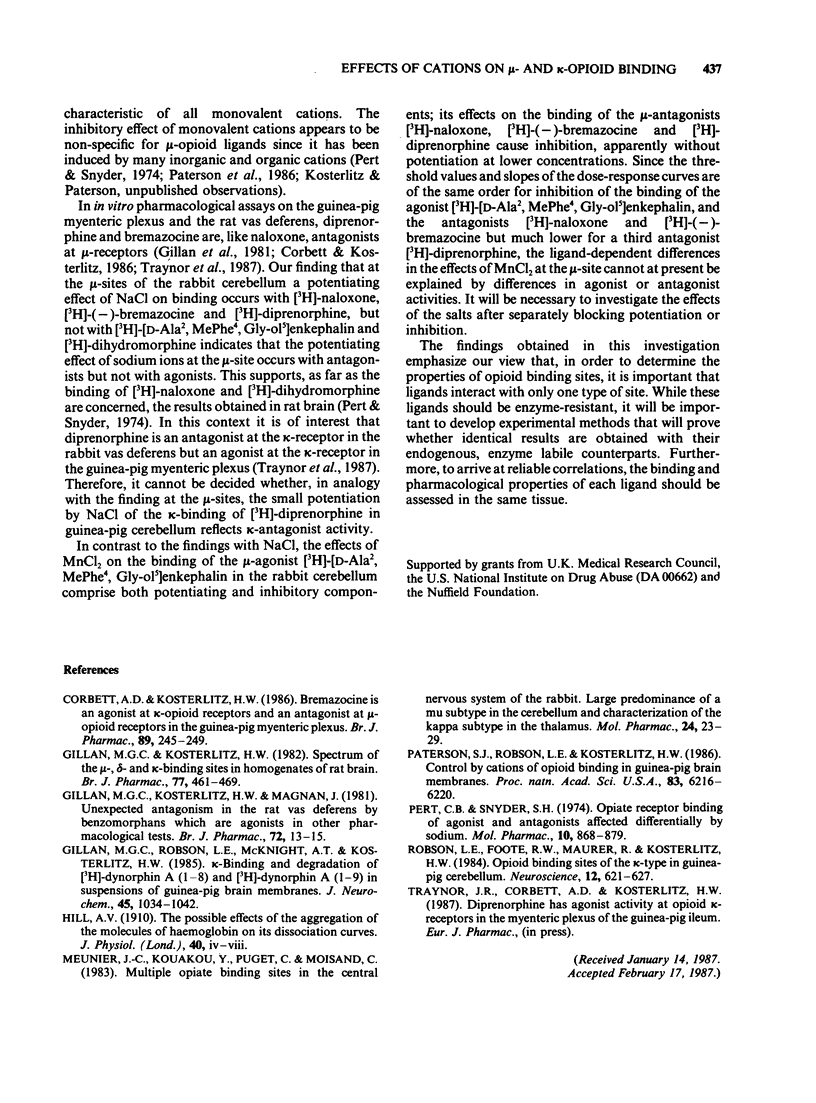
Selected References
These references are in PubMed. This may not be the complete list of references from this article.
- Corbett A. D., Kosterlitz H. W. Bremazocine is an agonist at kappa-opioid receptors and an antagonist at mu-opioid receptors in the guinea-pig myenteric plexus. Br J Pharmacol. 1986 Sep;89(1):245–249. doi: 10.1111/j.1476-5381.1986.tb11141.x. [DOI] [PMC free article] [PubMed] [Google Scholar]
- Gillan M. G., Kosterlitz H. W., Magnan J. Unexpected antagonism in the rat vas deferens by benzomorphans which are agonists in other pharmacological tests. Br J Pharmacol. 1981 Jan;72(1):13–15. doi: 10.1111/j.1476-5381.1981.tb09098.x. [DOI] [PMC free article] [PubMed] [Google Scholar]
- Gillan M. G., Kosterlitz H. W. Spectrum of the mu, delta- and kappa-binding sites in homogenates of rat brain. Br J Pharmacol. 1982 Nov;77(3):461–469. doi: 10.1111/j.1476-5381.1982.tb09319.x. [DOI] [PMC free article] [PubMed] [Google Scholar]
- Gillan M. G., Robson L. E., McKnight A. T., Kosterlitz H. W. Kappa-binding and degradation of [3H]dynorphin A (1-8) and [3H]dynorphin A (1-9) in suspensions of guinea pig brain membranes. J Neurochem. 1985 Oct;45(4):1034–1042. doi: 10.1111/j.1471-4159.1985.tb05520.x. [DOI] [PubMed] [Google Scholar]
- Meunier J. C., Kouakou Y., Puget A., Moisand C. Multiple opiate binding sites in the central nervous system of the rabbit. Large predominance of a mu subtype in the cerebellum and characterization of a kappa subtype in the thalamus. Mol Pharmacol. 1983 Jul;24(1):23–29. [PubMed] [Google Scholar]
- Paterson S. J., Robson L. E., Kosterlitz H. W. Control by cations of opioid binding in guinea pig brain membranes. Proc Natl Acad Sci U S A. 1986 Aug;83(16):6216–6220. doi: 10.1073/pnas.83.16.6216. [DOI] [PMC free article] [PubMed] [Google Scholar]
- Robson L. E., Foote R. W., Maurer R., Kosterlitz H. W. Opioid binding sites of the kappa-type in guinea-pig cerebellum. Neuroscience. 1984 Jun;12(2):621–627. doi: 10.1016/0306-4522(84)90077-0. [DOI] [PubMed] [Google Scholar]


